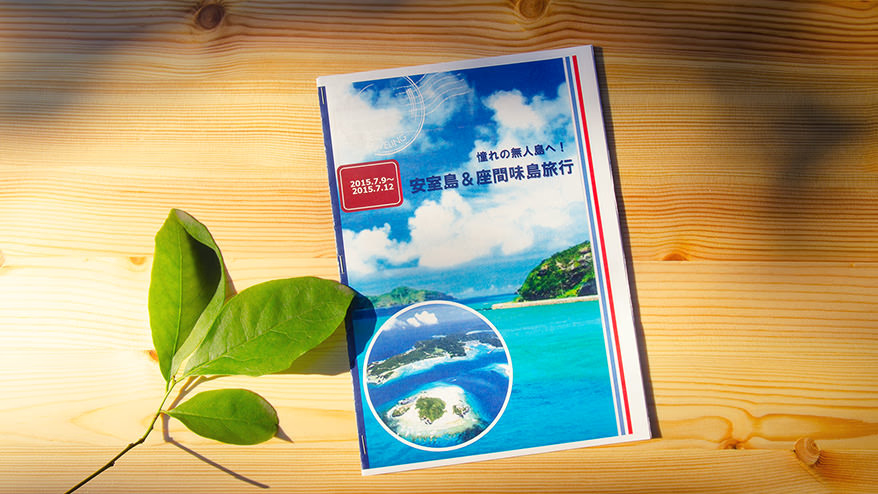In the previous column, through an interview with CEO Hayashi, we explained that "Monosansu-style DIY" is about improving communities and acquiring skills by devising ways to fill the "gap (= sharing)" between the public and private.
From now on, I would like to introduce "Ruler-style DIY" in more depth by looking at some specific events.
The first thing we'll look at is the company trip that took place in October of this year.
To begin with, company trips are not entirely work-related, but they are also not entirely private. Although you are usually work colleagues, on the trip you eat and sleep together and share each other's private parts. These parts that are neither public nor private are the "common" parts in the scale formula. How to enjoy this was the point of this company trip.
The destination for the first trip was a deserted island. We will talk to the three travel committee members (Dojo, Sakamoto, and Murakami) who made this unprecedented and original trip a reality, and think about the "ruler-style DIY" they felt through the company trip.
( Click here for a detailed report on the company trip )
The theme of the trip is "everyone is the main character"
What is the aim?
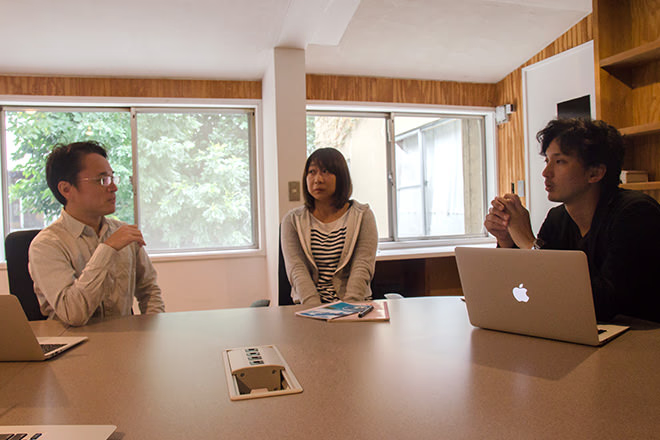
The three members of the company trip committee. From left: Murakami, Dojo, and Sakamoto.
- This year's theme was "Company trip where everyone is the main character." When I hear "main character" in the context of a trip, I imagine being treated well, being in the spotlight, and being treated well. What did you mean by "everyone is the main character" this time?
Dojo : No, it was the complete opposite of "hospitality" (laughs). Rather, it meant that each individual person had to take part in creating the company trip.
This is not a company trip that you simply participate in, but one that each individual creates together.
When I thought of a situation where everyone in the dojo could take the lead role, the first thing that came to mind was "camping." When camping, you have to create your own environment to live in nature. If you do that on a deserted island, you'll have to think of ways to make it happen, so I thought it would be interesting.
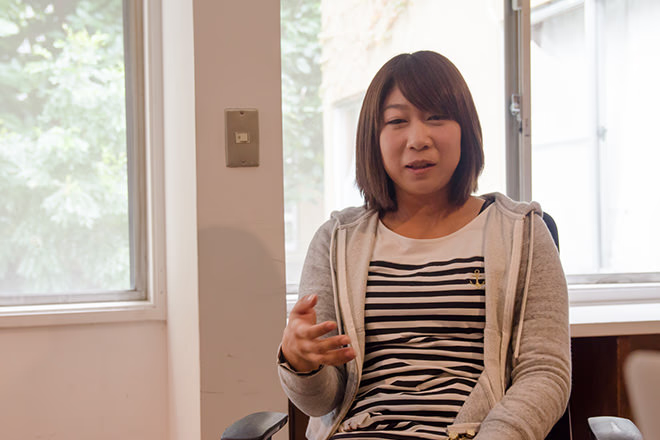
Thus, the "Deserted Island Survival Camp" was decided. The destination was Amuro Island in the Zamami Islands of Okinawa Prefecture. On an island without electricity or gas, shops or toilets, the group had to make their own fire, prepare toilets and sleeping quarters, and so a survival plan was born.
Since it was a very challenging project, it was apparently difficult to gain understanding within the company.
Sakamoto: To be honest, there were some negative opinions from everyone in the company (laughs). "Do you sleep outside?", "Aren't there any toilets?", "The outdoors is a bit..." were the most common responses.
A company trip that is "created by everyone" places a burden on the participants as well. It's not a relaxed trip, but it's fun because we're creating it ourselves! It seems that there were many difficulties, such as going around the company and persuading everyone to understand this.
If it's not enough, take action yourself
Travel committee turns to DIY
After the proposal for the Dojo Deserted Island was approved, I first called a company that specializes in deserted island tours. They gave me back more than four times the amount I had budgeted... Since it was completely outside my budget, I gave up on the deserted island plan and consulted a travel agency that I had used several times before.
Sakamoto: At that point, it was only a month before the company trip, so we were anxious because the details were not yet decided. We asked the travel agency to suggest a tour, and we also came up with other ideas. We thought of a plan to participate in an outdoor festival in Chiba, and Murakami-san's idea...
Murakami: This is an orienteering project to search for ingredients in Hokkaido.
Sakamoto: Exactly. I thought about such plans, but the concept of "everyone is the main character" was weak and I lacked a decisive factor. So in the end, I went back to the original deserted island idea.
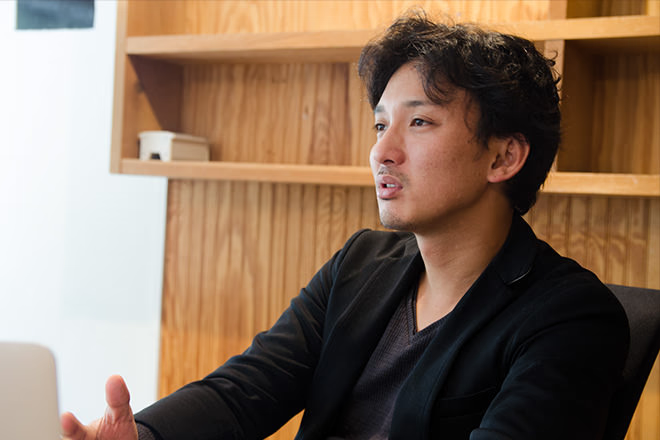
If there wasn't enough budget, surely they could make up for it by being creative. With this "DIY by the ruler" mentality, the committee members once again began looking for a way to make their deserted island project a reality.
Sakamoto: From then on, we started to plan the entire company trip ourselves. We looked for and arranged everything ourselves, including the plane, the high-speed boat, the accommodation, and the restaurants where we would all eat, and we really acted like a travel agency.
By booking our flights in the most cost-effective way possible and choosing reasonably priced accommodation, we were just about able to put together a deserted island tour that fit within our budget.
For dinner on the second day on Murakami Zamami Island, we went to a restaurant that a local recommended for island cuisine. We also collected information about the island little by little.
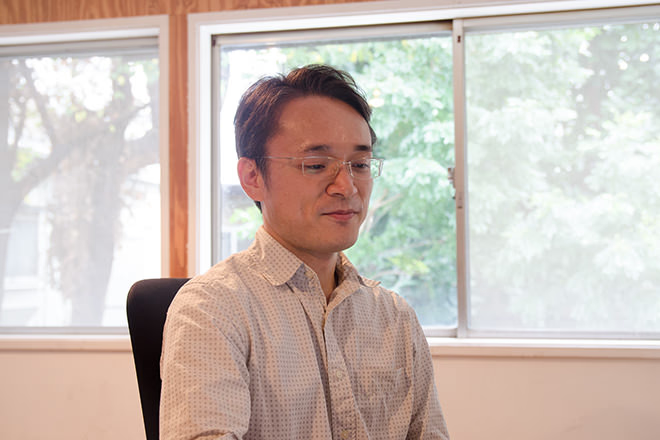
This is how the "Deserted Island Camping Tour" came to fruition. The committee members who created the trip themselves apparently gained the skills of a travel agent.
Through camping, each person's DIY will take off
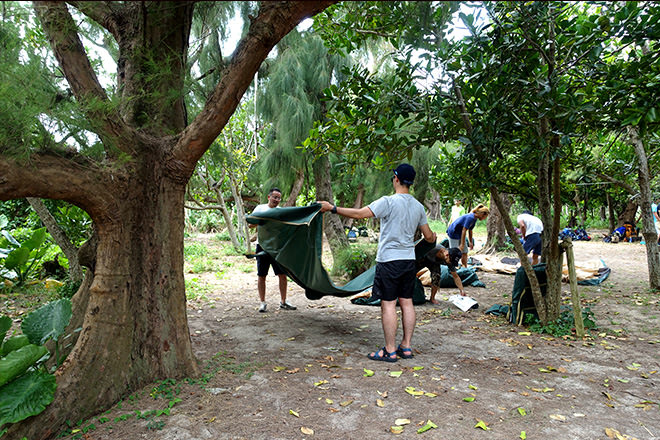
Sakamoto : We put a lot of effort into planning the deserted island camp, but due to the effects of a typhoon, we had to change the location from the deserted island of Amuro to Zamami Island. However, we barely changed the contents of the camp, and we were able to experience almost everything that we had originally planned.
They set up tents, built sleeping areas, gathered food and enjoyed barbecues. They made makeshift benches out of logs and hung strings on tree branches to hang out laundry. Through trial and error, they created their own environment to enjoy being in nature.
We don't have high-end beds or luxurious meals, but it's exciting to sleep in a tent that we set up ourselves, and the food we cook together is delicious. It may not be a big deal for people who are used to the outdoors, but I think it's quite unusual to go camping on your own during a company trip.
Sakamoto: One of the themes of this trip was "unity." I thought that going to a remote island I'd never been to before with people I don't normally have contact with outside of work, staying in the same tent, and eating the same food would create a sense of unity. Camping is exactly about communal living. Pitching a tent and preparing meals is for yourself and for everyone. Nothing will start unless everyone does something. I thought it would be interesting if creating such a situation would bring about even a slight change in everyone's relationships and awareness.
Everyone took the lead role (took a proactive role) and worked to make the "commons" a more enjoyable place, and also acquired their own wisdom; this was a true example of "ruler-style DIY" in action.
How you enjoy the island is up to you
Enjoy your trip in a DIY style
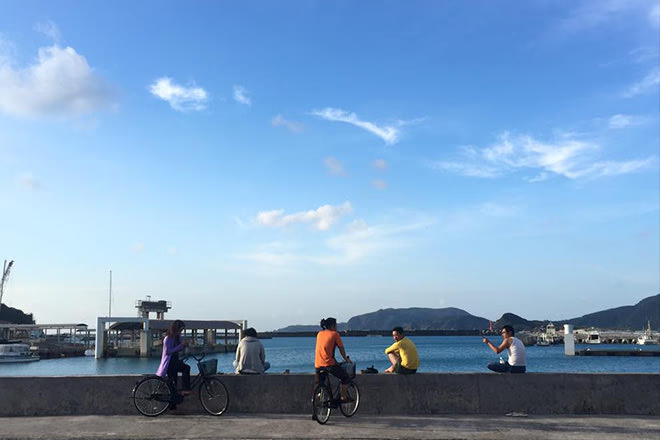
- On the second and third days, you had free time on Zamami Island, and everyone seemed to enjoy themselves.
Zamami Island is a mecca for scuba diving, so about half of the participants had tried it. Other than that, everyone enjoyed themselves by touring the island on bicycles or mopeds, or relaxing on the beach while looking out at the sea.
Some people in Murakami asked locals for lunch and went to recommended restaurants.
One of the great joys of traveling to Zamami Island is the wide range of options to choose from, including marine activities such as scuba diving, snorkeling, and swimming in the sea, as well as hiking, cycling, and touring.
There was free time for two days, but rather than just spending the time as they pleased, they tended to act in groups, and people who are usually reserved started to take the lead. It was also very impressive to see people who shared the same interests gather together and do things together, rather than forming organized groups.
What we learned from a company trip where "everyone is the star"
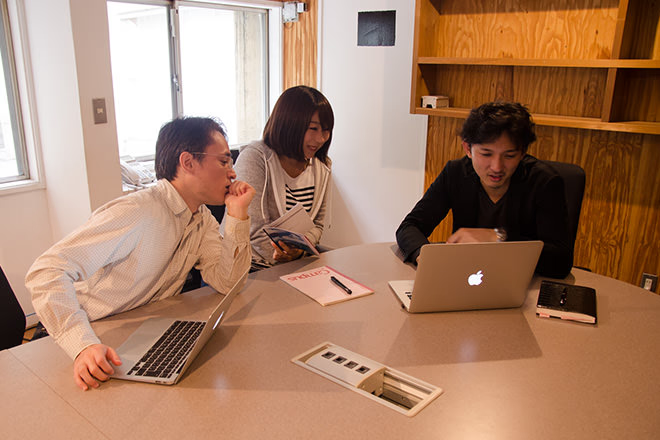
- It was a challenging company trip to plan, with everyone camping on a remote island. What did the trip committee members learn from it?
It was good to realize that the Murakami Travel Committee doesn't have to do everything, but that it's okay to leave it up to the other participants. This is the same in everyday life, and I think there are times when it's better to cooperate with everyone rather than trying to handle things on your own.
Sakamoto: I think there is a sense of accomplishment in being able to create a sense of unity. Before the trip, I heard some complaints (laughs), but when we actually went, everyone had a great time. It was also good that the people who participated became closer than before.
After the dojo , I learned how tours are organized, which was a big thing for me. From now on, I think I'll be able to plan more and more original trips on my own.
Through this company trip, we were able to discover new sides to each other and build deeper relationships by spending time together and creating a "common" that was the "company trip."
This trip was not one that was prepared for us by someone who said, "Yes, go ahead," but rather everyone took the lead role, shaping the trip and acquiring a variety of skills; it was truly a "DIY by the ruler" type of trip.
I wonder what kind of company trip we'll have next year.
In this way, it seems that our company trips become more edgy with each passing year (laughs).
( Click here for a detailed report on the company trip )
